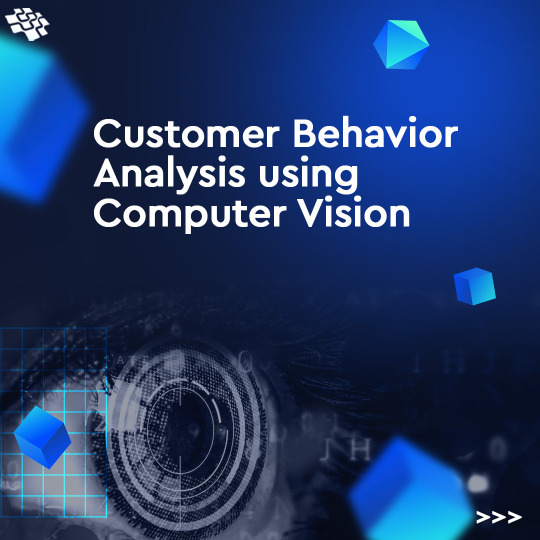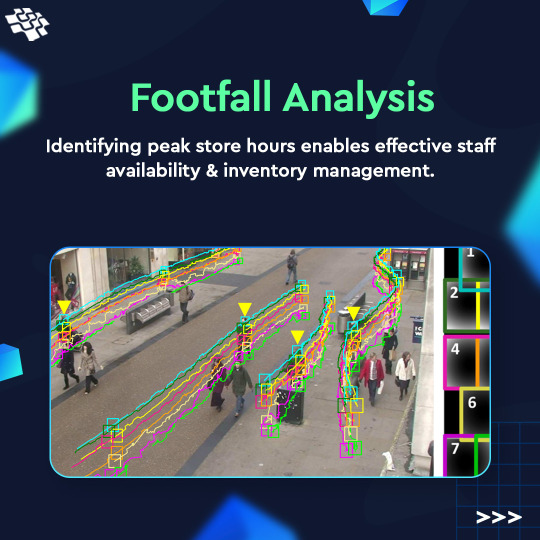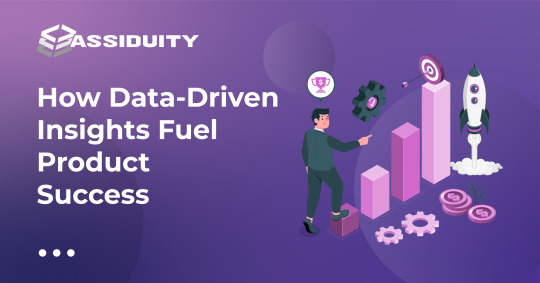#CustomerBehavior
Explore tagged Tumblr posts
Text
How Predictive Analytics is Changing the Game for eCommerce in 2025!
Gone are the days of guesswork. With Predictive Analytics in eCommerce, brands can now anticipate customer behavior, optimize inventory, and skyrocket conversions—all in real time.
✅ Personalized Shopping Experiences ✅ Smarter Inventory & Pricing Decisions ✅ Reduced Cart Abandonment ✅ Hyper-targeted Marketing Campaigns
#PredictiveAnalytics#eCommerceStrategy#DataDrivenMarketing#RetailTech#CustomerBehavior#SmartInventory#AIinEcommerce#DigitalRetail#KodyTechnolab#BusinessIntelligence#DataScience#ConversionOptimization#FutureOfCommerce
0 notes
Text
Can Insurance CRM software provide predictive analytics for customer behavior?
Yes, Insurance CRM software leverages advanced predictive analytics to understand customer behavior and enhance decision-making. Here’s how:
Data-Driven Insights:
Analyzes customer data such as past interactions, purchase history, and preferences to predict future behavior.
Personalized Marketing:
Uses predictive models to identify cross-sell and up-sell opportunities tailored to individual customer needs.
Risk Assessment:
Forecasts potential policy lapses or claims based on customer activity trends and engagement levels.
Customer Retention:
Predicts at-risk customers and triggers automated workflows for personalized follow-ups to improve retention rates.
Sales Optimization:
Helps sales teams prioritize leads and identify high-value customers with the potential for conversion.
Enhanced Engagement:
Recommends the best communication channels and times to engage with customers effectively.
Discover how Mindzen’s Insurance CRM software empowers brokers with predictive analytics. Learn more here: https://mindzen.com/what-is-a-crm-in-insurance/
#InsuranceCRM#InsuranceSoftware#PredictiveAnalytics#CustomerBehavior#DataDrivenDecisions#CRMTechnology#InsuranceSolutions#CustomerRetention#InsuranceTech#PolicyManagement#CustomerInsights#CRMForInsurance#DigitalInsurance#PredictiveModels#InsuranceInnovation#CRMTools#InsuranceCustomerExperience#CustomerAnalytics#InsuranceData#PolicyAnalytics#CRMFeatures#CustomerEngagement#InsuranceCustomerService#InsuranceAutomation#SalesOptimization#DigitalTransformation#InsuranceTechnologySolutions#InsuranceBrokers#CustomerCentricCRM#PolicyManagementSoftware
0 notes
Text
VyTCDC offers a complete digital marketing course that explores how AI can be an essential tool in navigating the complex landscape of customer behavior, big data, and intense competition.
#VyTCDC#DigitalMarketing#AIinMarketing#CustomerBehavior#BigData#MarketingStrategy#AIDrivenMarketing#MarketingCourse#DigitalSkills#MarketingInnovation
0 notes
Text
AI Staff Exclusion
Our advanced Footfall Analytics system uses AI technology to deliver accurate customer counts by automatically excluding staff. With Xpandretail, you get a 100% GDPR complaint solution as we don't store any personal information or data about customers.
Click to Implement AI in Retail: https://xpandretail.com/people-counting/

#Xpandretail#FootfallAnalytics#AI#RetailSolutions#CustomerBehavior#GDPRCompliant#RetailInnovation#SmartRetail#ShowroomAnalytics#Heatmaps#MallSense#SàvantDataSystem#Gulf#UAE#Kuwait#Bahrain#Oman#Qatar#KSA#GCC#MENA
1 note
·
View note
Text
Unlocking Advanced Analytics and eCommerce Insights with JavaScript
In the competitive world of eCommerce, leveraging JavaScript for advanced analytics is essential for understanding user behavior and improving performance. JavaScript allows businesses to collect real-time data on user interactions, such as clicks and page views, using tools like Google Analytics. This enables immediate insights that drive decision-making.
With JavaScript, businesses can implement event tracking to monitor specific actions, helping to identify engaging features. Additionally, JavaScript enhances user segmentation by allowing companies to group users based on their preferences and behaviors. This leads to targeted marketing strategies that increase conversion rates.
A/B testing is another key advantage of using JavaScript. It enables businesses to test different versions of their websites or apps, optimizing user experiences in real time. Moreover, JavaScript facilitates seamless integration with third-party analytics and marketing tools, ensuring smooth data flow across systems.
In conclusion, leveraging JavaScript for analytics and eCommerce tracking provides businesses with the tools needed to understand customer behavior and enhance user experiences. As the digital landscape evolves, JavaScript will remain crucial for effective eCommerce strategies and improved performance.
#JavaScript#eCommerce#Analytics#DataTracking#UserExperience#WebDevelopment#DigitalMarketing#ABTesting#EventTracking#RealTimeData#DataInsights#ConversionRateOptimization#MarketingStrategy#CustomerBehavior#TechTrends
1 note
·
View note
Text
In today's rapidly evolving digital landscape, we're witnessing a significant shift in how organizations approach data projects. As a solution architect, I've observed a growing trend: the integration of DevOps practices with Business Intelligence (BI) is quickly becoming a top priority, superseding traditional siloed data projects. Let's explore why this convergence is essential for modern solutions.
The Limitations of Siloed Data Projects
Traditionally, data teams operated in isolation, focusing solely on data collection, analysis, and reporting. While this approach had its merits, it also presented several challenges:
1. Slow time-to-insight
2. Limited scalability
3. Difficulty in adapting to changing business requirements
4. Inconsistent data across departments
5. Lack of continuous improvement processes
The DevOps and BI Synergy
By bringing DevOps principles into the BI world, we're addressing these challenges head-on. Here's why this integration is crucial from a solution architecture standpoint:
1. Agile Data Pipelines: DevOps practices enable us to build flexible, automated data pipelines that can quickly adapt to new data sources or changing business needs. This flexibility is essential in today's rapidly changing business landscape.
2. Continuous Integration and Delivery of Insights: With CI/CD practices applied to BI, we can ensure that new data models, reports, and dashboards are tested, validated, and deployed rapidly and reliably.
3. Infrastructure as Code: Treating data infrastructure as code allows for version control, easy replication of environments, and quick scaling of BI systems as data volumes grow.
4. Automated Testing and Quality Assurance: Implementing automated testing for data processes, ETL jobs, and reports significantly improves data quality and reliability of insights.
5. Monitoring and Observability: DevOps principles help in setting up comprehensive monitoring for BI systems, ensuring performance, detecting anomalies, and facilitating quick troubleshooting.
6. Collaboration and Knowledge Sharing: Breaking down silos between data scientists, analysts, and IT ops teams fosters innovation and ensures that BI solutions are both powerful and practical.
Architectural Considerations
When designing solutions that integrate DevOps and BI, consider the following:
1. Modular Architecture: Design your BI system with loosely coupled components that can be independently developed, tested, and deployed.
2. API-First Approach: Implement APIs for data access and integration to enable flexibility and interoperability.
3. Containerization: Use container technologies like Docker to ensure consistency across development, testing, and production environments.
4. Orchestration: Employ orchestration tools like Kubernetes to manage and scale your BI infrastructure efficiently.
5. Version Control: Implement version control for data models, ETL processes, and dashboards, not just for code.
6. Automated Data Governance: Integrate data governance checks into your CI/CD pipeline to ensure compliance and data quality.
Overcoming Challenges
While the benefits are clear, implementing DevOps in BI is not without challenges:
1. Skill Gap: Teams need to develop new competencies spanning both DevOps and BI domains.
2. Cultural Shift: Encouraging collaboration between traditionally separate teams can be difficult.
3. Tool Integration: Ensuring seamless integration between DevOps tools and BI platforms requires careful planning.
4. Data Security: With increased automation and data flow, robust security measures become even more critical.
Conclusion
As solution architects, our role is to design systems that not only meet current needs but are also adaptable to future requirements. The integration of DevOps and BI is no longer just a nice-to-have – it's becoming essential for organizations that want to remain competitive in a data-driven world.
By embracing this convergence, we can create BI solutions that are more agile, reliable, and capable of delivering timely insights. This approach not only improves the technical aspects of data management but also aligns more closely with business objectives, enabling organizations to make data-driven decisions faster and more effectively.
The future of BI lies in breaking down silos, automating processes, and fostering a culture of continuous improvement. As solution architects, it's our responsibility to lead this transformation and help our organizations harness the full potential of their data assets.
Contact Us For More Details Or Email Us @ [email protected]
#xequalto#DevOps#BusinessIntelligence#SolutionArchitect#DataIntegration#AgileData#CI_CD#DataPipelines#InfrastructureAsCode#DataTesting#DataMonitoring#DataGovernance#DataSecurity#DataCulture#DigitalTransformation#DataDriven#ContinuousImprovement#TechInnovation#DataAnalytics#DataStrategy#customerbehavior#businessgrowth#inventorymanagement#datascience#machinelearning#datadrivendecisionmaking#customerinsights
0 notes
Text
HOW ODOO’S AI-POWERED TOOLS ARE REVOLUTIONIZING BUSINESS OPERATIONS
Leverage Odoo’s AI capabilities with Wan Buffer Services to transform your business. Predictive analysis and automation in Odoo streamline operations, enhance decision-making, and drive growth. Contact us for a consultation and unlock Odoo's full potential!
#AIPoweredBusiness#OdooERP#WanBufferServices#PredictiveAnalysis#BusinessAutomation#SalesForecasting#CustomerBehavior#AIIntegration#BusinessGrowth#OdooCommunityDays
0 notes
Text
Heatmaps & Insights: The Game-Changers of eCommerce Success with Diginyze
Struggling to understand your online customers? We've got you covered with our revolutionary heatmaps and insights.
Say goodbye to guesswork and hello to strategic success with AI-driven analytics.
Ready for a journey into your customers' minds?
Click here to know how: https://www.diginyze.com/blog/heatmaps--insights-the-game-changers-of-ecommerce-success-with-diginyze/

#Diginyze#CustomerBehavior#DataDrivenDecisions#EcommerceStrategies#ConversionRateOptimization#ecommercetrends#ABTesting#CustomerSatisfaction#EcommerceAnalytics#userengagemen#mobilecommerce#personalization#eCommerceSuccess#Heatmaps#AIeCommerce#UserExperience#OnlineRetail#mcommerce
0 notes
Text
Marketers and business owners can make better decisions to grow their businesses by having a metric for measuring customer satisfaction. Companies use customer journey analytics for their ability to improve customer experience, increase customer retention and lifetime value, and grow revenue. With a clearer picture of the customer story backed by real-time data, organizations can see exactly how someone behaves on their website or any other platform. Consistent customer support throughout the customer journey is becoming increasingly important for business success.
#CustomerSatisfactionMetric#CustomerJourneyAnalytics#CustomerExperience#CustomerRetention#RealTimeData#CustomerBehavior#WebsiteAnalytics#PlatformAnalytics#BusinessSuccess
0 notes
Text





According to @allied market research The global computer vision market was valued at $15 billion in 2022, and is projected to reach $82.1 billion by 2032, growing at a CAGR of 18.7% from 2023 to 2032.
Swipe through to discover the magic of customer behavior analysis. From real-time people detection to estimating footfall and ensuring privacy with on-device image recognition, the future of retail tech is here!
Let us tell you how your business can benefit from computer vision : https://nextgeninvent.com/computer-vision-services
#retailindustry#services#RetailInnovation#retailstores#customerengagement#customerexperience#instoreexperience#consumerbehaviour#b2c#customercentricity#shoppingexperience#omnichannel#customerbehavior#nextgeninvent
1 note
·
View note
Text
How does Insurance CRM software help track customer journeys across multiple touchpoints?
Insurance CRM software is designed to provide a unified view of customer interactions across all touchpoints, enabling brokers to deliver personalized and consistent experiences:
Centralized Data Management:
Collects and organizes customer data from various channels, including emails, calls, social media, and in-person meetings, into a single dashboard.
Multi-Channel Tracking:
Monitors interactions across multiple platforms, ensuring every customer touchpoint is recorded and analyzed.
Customer Journey Mapping:
Visualizes the entire customer journey, from initial inquiry to policy purchase and renewal, helping brokers understand customer behavior.
Automated Notifications:
Sends reminders for key touchpoints like follow-ups, policy renewals, and claims updates, ensuring no step is missed.
Behavioral Analytics:
Leverages AI to analyze customer behavior patterns and suggest actionable insights for better engagement.
Personalized Engagement:
Enables brokers to tailor communication based on the customer’s journey stage, improving satisfaction and loyalty.
Discover how Mindzen’s Insurance CRM software can revolutionize customer journey tracking. Learn more here: https://mindzen.com/
#InsuranceCRM#InsuranceSoftware#CustomerJourney#InsuranceBrokers#CRMSoftware#CustomerEngagement#PolicyManagement#InsuranceTechnology#DigitalInsurance#CustomerSatisfaction#CRMForInsurance#CustomerTracking#TouchpointManagement#InsuranceSolutions#PolicyRenewalTracking#CRMFeatures#CustomerBehavior#InsuranceAutomation#MultiChannelTracking#DataAnalytics#PersonalizedInsurance#InsuranceInnovation#PolicyRenewal#InsuranceTools#CustomerExperience#DigitalTransformation#InsuranceEcosystem#CustomerInsights#InsuranceBrokerCRM#InsuranceJourney
0 notes
Text
youtube
#AI#LeadGeneration#ArtificialIntelligence#MarketingAutomation#BusinessGrowth#PredictiveAnalytics#MachineLearning#CustomerEngagement#DigitalMarketing#LeadNurturing#ConversionRate#MarketingStrategy#Chatbots#VirtualAssistants#DataAnalysis#CustomerBehavior#SalesFunnel#MarketingCampaigns#AutomationTools#SmallBusiness#Enterprise#AIInnovation#MarketingEfficiency#BusinessSuccess#CustomerAcquisition#ROI#CustomerInsights#Youtube
1 note
·
View note
Text
Sales Forecasting Techniques: Using Data Analysis to Determine the Right Sales Force Size
In the dynamic world of healthcare business, the ability to predict sales accurately is a game-changer. When it comes to determining the right size for your sales team, harnessing the power of data analysis can provide invaluable insights. In this article, we'll explore practical techniques that leverage data to help you make informed decisions about your sales force size.
Write to us at [email protected] to explore practical techniques that leverage data to help companies make informed decisions about their sales force size.
The Data Advantage:
Data serves as the foundation of informed decision-making, and sales forecasting is no exception. Start by gathering historical sales data. This wealth of information holds patterns, trends, and seasonal fluctuations that can offer valuable insights into your sales performance.
Decoding Trends:
Examine your sales data over time to identify recurring patterns. Do certain months or quarters consistently show higher sales? Recognizing these trends enables you to allocate resources efficiently, ensuring your sales team is appropriately sized to meet peak demand.
Customer Insights:
Delve into customer data to understand their purchasing behaviors. Analyze demographics, buying frequency, and preferences. This data-driven approach helps tailor your sales team size to different customer segments, ensuring personalized attention where it matters most.
Market Dynamics:
External factors significantly influence sales. Keep an eye on economic indicators, industry shifts, and competitor activities. Adjust your sales team size based on anticipated market changes, ensuring you're well-prepared to respond effectively.
Embrace Technology:
Leverage modern tools like Customer Relationship Management (CRM) software. These platforms consolidate customer interactions, providing a comprehensive view of sales activities. Analyzing CRM data highlights effective sales strategies, enabling you to fine-tune your team size accordingly.
The Power of Forecasting Models:
Harness statistical models to forecast future sales. Techniques like linear regression and time-series analysis use historical data to predict future trends. These models empower you to anticipate demand, ensuring your sales team remains optimally staffed.
Balancing Scalability and Flexibility:
Account for growth in your sales forecasting. Ensure your sales team size can expand alongside emerging business opportunities. Being adaptable and responsive positions you to capture new markets effectively.
A Cycle of Review and Refinement:
Sales forecasting is an ongoing process. Regularly revisit and refine your analysis. Market dynamics evolve, and your sales team size should adapt to remain effective.
In Conclusion:
Data analysis is the compass guiding your healthcare sales forecasting journey. By tapping into historical sales data, decoding trends, understanding customer behaviors, considering market dynamics, embracing technology, utilizing forecasting models, and ensuring scalability, you can confidently determine the optimal size for your healthcare sales team. Remember, success stems from the ability to adapt and fine-tune your approach over time.
Visit our website now: https://www.anervea.com/
#SalesForecasting#DataDrivenInsights#OptimizeSalesTeam#HealthcareBusiness#CustomerBehavior#MarketTrends#TechnologyAdvancements#Scalability
0 notes
Text
Let Xpandretail solutions help you unlock the power of data.
Analyze and manage customer behavior inside with an AI-powered dashboard. Let Xpandretail solutions help you unlock the power of data. 📈
Data analytics solutions we offer are trusted by retailers and mall owners across the GCC region. From understanding shopper behavior to optimizing customer journeys, we've got you covered.
Discover how Xpandretail is shaping the future of retail analytics. https://xpandretail.com/data-analytics/

#Xpandretail#RetailAnalytics#CustomerBehavior#RetailInnovation#GCCRetail#DataDrivenSuccess#CustomerInsights#DataDrivenDecisions#CustomerFirst#Xpandmall#SàvantDataSystem#MallSense
1 note
·
View note
Text

Social Media Analytics: Measuring Your Impact
In the current digital era, social media serves as a potent tool for businesses to engage with their audience, enhance brand visibility, and stimulate growth. However, to truly harness the power of social media, it's essential to understand and measure your impact. Social media analytics provides invaluable insights that help you track your performance, understand your audience, and refine your strategies. In this blog, we'll delve into two critical metrics: Engagement Rate and Social Reach.
What is Social Media Analytics?
Social media analytics is the process of gathering and analyzing data from social media platforms to make informed decisions. It involves tracking various metrics that indicate how your content is performing and how your audience is interacting with it. By leveraging social media analytics, you can optimize your content, enhance your marketing strategies, and ultimately achieve better results.
Understanding Engagement Rate
Engagement Rate is a key metric that measures the level of interaction your content receives from your audience.This encompasses likes, comments, shares, and various other types of engagement. The higher the engagement rate, the more effectively your content is resonating with your audience.
How to Calculate Engagement Rate: Engagement Rate can be calculated using the following formula:Engagement Rate= ( (Total likes+ Total comments + Total shares + Total shares)/Total Followers )×100
For example, if a post receives 500 likes, 100 comments, and 50 shares, and you have 10,000 c, the engagement rate would be:Engagement Rate=((500+100+50)/10,000 )×100=6.5%
Why Engagement Rate Matters: Engagement Rate is a vital metric because it indicates how well your content is connecting with your audience. High engagement rates signify that your audience finds your content valuable, interesting, and worth interacting with. By monitoring and analyzing your engagement rate, you can identify which types of content perform best and refine your strategy accordingly.
Exploring Social Reach
Social Reach refers to the total number of unique users who have seen your content. Unlike engagement, which measures interactions, reach focuses on the visibility of your content. It gives you an idea of how many people your message is reaching and helps you gauge the overall effectiveness of your social media campaigns.
How to Increase Social Reach:
Create Shareable Content: Craft content that resonates with your audience and encourages them to share it with their network.
Leverage Influencers: Collaborate with influencers in your niche to amplify your reach and tap into their audience.
Utilize Hashtags: Use relevant and trending hashtags to increase the discoverability of your content.
Optimize Posting Times: Determine the optimal posting times by analyzing when your audience is most engaged.
Why Social Reach Matters: Social Reach is crucial because it indicates the potential audience size for your content. A high reach means that your content is being seen by a large number of people, increasing the chances of gaining new followers and expanding your brand's visibility. Monitoring your reach helps you understand how effectively your content is spreading across social media platforms.
Combining Engagement Rate and Social Reach
While Engagement Rate and Social Reach are valuable metrics individually, they provide even greater insights when analyzed together. A high reach with low engagement might suggest that your content is being seen but not resonating with your audience. Conversely, high engagement with low reach could indicate that your content is highly engaging to a small audience. Striking a balance between the two is key to a successful social media strategy.
Social media analytics is a powerful tool that enables you to measure your impact and refine your strategies. By focusing on metrics like Engagement Rate and Social Reach, you can gain valuable insights into your audience's behavior and preferences. Use these insights to create more engaging content, expand your reach, and ultimately achieve your social media goals. Remember, consistent monitoring and analysis are essential for staying ahead in the ever-evolving world of social media.
Contact Us For More Details Or Email Us @ [email protected]
#xequalto#DataDrivenDecisionMaking#SocialMedia#Analytics#EngagementRate#SocialReach#DigitalMarketing#DataDriven#BusinessGrowth#businessintelligence#customerbehavior#customerinsights#machinelearning#datascience#inventorymanagement#ecommerce
0 notes
Text

In today's data-rich landscape, the success of a product often hinges on the ability to harness and interpret data-driven insights. These insights are more than just numbers; they're windows into customer behavior, market trends, and the performance of your product in real-world scenarios. By adopting a data-driven approach, businesses gain a competitive edge by making informed decisions that resonate with their target audience.
#DataDrivenInsights#ProductSuccess#CustomerAnalytics#BusinessIntelligence#DataAnalysis#MarketResearch#ProductDevelopment#DataStrategy#Innovation#DataDrivenDecisions#CustomerBehavior#MarketInsights#ProductStrategy#DataAnalytics#BusinessStrategy#DigitalTransformation#DataScience#CustomerExperience#ProductPerformance#DataInnovation
0 notes